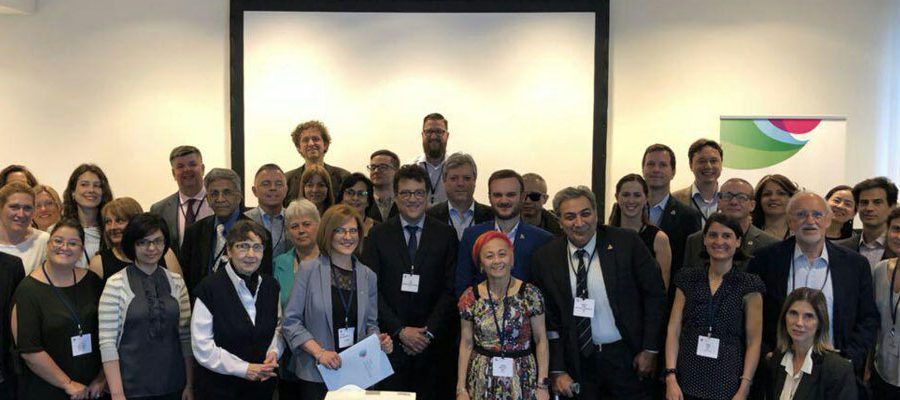By Dr. Hamid Reza Edraki, RADOIR Managing Director
Vienna has always been the symbol of love and romanticism for me. How lucky I am, for the headquarters of Joint European Rare Diseases Society was located in the realm of music and timeless fine arts. The second reason for my happiness is the location of the European Radiology Association in the heart of Vienna. Eventually, the German language is another reason to remind me all the memories belonging to those days I was studying in Germany and Austria .
The 9th global conference of associations and rare diseases foundations in Europe as well as some other countries’ from all over the world, was held in Austria in mid May 2018. The venue of this world conference was the permanent site of Vienna exhibition next to the university and Blue Danube. I was proud of joining Mr. Yaser Davoudian (RADOIR Chairman), Dr. Eftekhari(RADOIR Int’l Affairs), Mr. Tohidi (RADOIR Pharmaceutical Dept.)
The conference entry formalities were done rapidly. On the first day , the assembly of directors was held to investigate the problems at the foundations, societies and NGO’s. They also discussed about the new vision to manage the rare patients and therapists. Ms. Dorhane Wong Rieger , the Chinese chairman of the rare diseases foundation of Canada managed the discussion, accordingly. Today evening , together with my Iranian colleagues, I had a meeting session with Mr. Yann Le Cam.
After a brief commemoration of Dr. Ali Davoudian, he promised to have further collaboration on sharing ideas and experiences and suggested solutions for orphan drugs support as well. The second day of the event was great to me since I am a radiologist and familiar with diagnostic issues . Various Para-clinical diagnostic methods including: Genetics, Bio technologic and molecular cells laboratories which are the diagnostic basis for the genetic rare diseases, mostly. It seemed there hadn’t been any significant achievements on the field of Medical Imaging Diagnosis.
That was a good opportunity to me, being at the panel for the early Medical diagnostic method, especially for sonography and MRI. I could present the result of my two-year study on early diagnosis of fetal rare diseases in pregnant mothers to whom advised have screening, imaging, Sonography tests and that came to be so much interesting for the audiences out there. That evening, I was highly honored to meet Dr. Ana Rath, the president at Orphanet, and discuss how we can proceed to showcase my case studies on Orphanet Website.
On the third day, digitalizing Rare Diseases patients’ profiles, clinical data, genetic tests, medical imaging results, and also treatment and rehabilitation methods in PACS system were discussed. By using this system, all the patient groups and organizations across the world will have access to the patients’ information and are able to keep in touch with each other as well as to consult with doctors.
Indeed, RareConnect can bring all the rare patients, their families, patient groups and specialists together and is also able to make a real global village of Rare Patients altogether. At the evening, all the companies affiliated with Orphanet indicated their products and equipment to Rare Diseases Foundations delegations from all over the world.
Moreover, I had a meeting with Ms. Janvse Viciene, research manager of medical technology projects from University of Lithuania who was familiar with the new biotechnological plans for controlling rare diseases by non-medical techniques. At the end, the event program schedule which is going to be held in Barcelona, Dublin and Paris was announced and a memento photo was taken with all the attendees. The symposium closed by the slogan of “Show your rare, Show you care” at the evening on 12th May, 2018.
Unfortunately, we have many patients affected by these diseases in our country and a lot of medical – scientific facilities and services are provided to them, however, we do not have any organization to record them, systematically. Hopefully, we all at RADOIR are trying to promote the rare patients’ lives quality by digitalizing the data system and organizing the scientific and educational healthcare developments .









